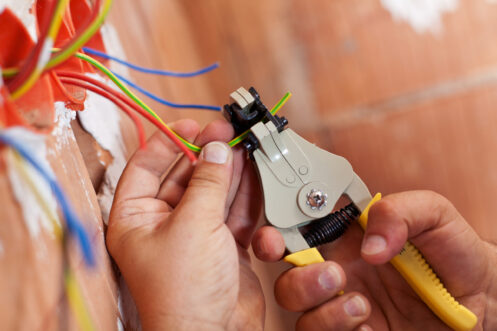5 Electrical Maintenance Tasks You Should Be Doing

Electricity is the lifeblood of modern society, powering everything from our homes to our workplaces. However, electrical systems can quickly become dangerous and unreliable without proper maintenance. Whether you’re a homeowner, business owner, or facilities manager, staying on top of your electrical maintenance tasks is crucial to ensure safety and reliability. Keep reading to explore the top electrical maintenance tasks you should be doing to keep your electrical systems in tip-top shape.
1. Visual Inspection
Visual inspection is an essential task that should be carried out by electrical maintenance personnel to ensure that electrical equipment and systems are in good working condition. This task involves a thorough visual examination of electrical components, wiring, and other parts of an electrical system to identify any signs of wear, damage, or other issues that may compromise the safety and reliability of the system.
During a visual inspection, maintenance personnel will look for signs of corrosion, cracks, rust, or other damage to electrical components. They should also check for loose connections, exposed wires, and any other signs of wear and tear that could lead to electrical faults or hazards. Furthermore, a visual inspection can help identify potential fire hazards, such as overheating electrical equipment, that could cause catastrophic property damage and endanger lives. Additionally, this task can identify any non-compliance issues with local, state, or federal regulations that may lead to fines, penalties, or legal liabilities.
Regular visual inspections are essential to maintain the integrity and safety of electrical systems. Timely detection of problems through visual inspection can prevent catastrophic failures and prolong the life of electrical equipment, leading to significant cost savings for businesses and individuals. To ensure that visual inspection is carried out effectively, you need well-trained personnel who understand the importance of this task and can identify potential hazards. Also, using proper equipment and following established procedures and guidelines is crucial to ensure accurate and consistent results.
2. Testing Electrical Equipment
Testing electrical equipment ensures the safety and reliability of electrical systems. This task involves the use of specialized equipment designed to check for any faults or defects in electrical equipment. During the testing process, various parameters of the equipment, such as voltage, current, resistance, insulation resistance, and continuity, are measured to ensure that the equipment is functioning correctly and is safe to use. The testing process can be done manually or automated using specialized test equipment.
One of the main reasons why testing electrical equipment is important is that it helps prevent electrical accidents. Electrical equipment that is not functioning correctly can pose a significant hazard to workers and the general public. Faulty electrical equipment can cause electrical shocks, fires, or even explosions. By testing equipment regularly, technicians can identify potential faults and defects and repair them before they cause any accidents or damage.
Testing electrical equipment also helps to ensure that equipment is functioning efficiently. Equipment that is not working correctly can cause unnecessary energy consumption, leading to increased energy bills. Regular testing can identify equipment that is not functioning efficiently, enabling it to be repaired or replaced to prevent waste of energy. Additionally, testing electrical equipment can help prolong the equipment’s lifespan. Regular testing can detect faults and defects that, if left unrepaired, can cause permanent damage to the equipment. Repairing these faults can help extend the equipment’s life, saving the replacement cost.
3. Cleaning Electrical Equipment
Cleaning electrical equipment involves removing any debris or foreign substances present on the equipment’s surface or inside its components. This can be achieved through various methods, depending on the type and location of the equipment. For example, wiping the surface with a clean cloth or using a vacuum cleaner to remove dust and dirt from the ventilation system.
Dirt, debris, and other buildup can cause the equipment to overheat and become less efficient. Over time, this can lead to a decrease in performance and even a complete breakdown of the equipment. Additionally, dirt and debris can be conductive, causing electrical arcing or short circuits, which can be dangerous and cause fires or electrocution.
Cleaning electrical equipment is not something that inexperienced individuals should do, as it can be hazardous if not done correctly. Hiring a professional with the necessary knowledge and experience to carry out this task safely and effectively is important. A professional will use specialized equipment, such as vacuums and brushes, to remove dirt and debris from the equipment without causing damage. They will also have the proper protective gear to prevent injury from electrical shocks or exposure to hazardous materials.
4. Lubricating Moving Parts
The various moving parts of electrical equipment, such as motors and generators, must be lubricated periodically. Regularly lubricating electrical equipment’s moving parts helps reduce wear and tear on the components. Friction between moving parts causes heat, which can lead to component failure over time. The lubricant acts as a protective barrier, reducing friction and keeping the components running smoothly. Proper lubrication also reduces noise and vibration, which can affect the performance of the equipment.
This job must be done using the right lubricant. The lubricant should be compatible with the equipment’s materials and operating conditions. Generally, lubricants used for electrical equipment should have a high dielectric strength to prevent electrical breakdown and should be resistant to moisture, dust, and other contaminants.
5. Electrical Upgrade
Electrical upgrade refers to the process of updating or replacing outdated electrical components, wiring, or systems in a building or home to ensure that they meet modern safety standards and can handle the demands of today’s electrical devices and appliances. Electrical upgrades may include replacing old wiring, installing new circuits or panels, upgrading the electrical service, or improving the overall electrical infrastructure of a building.
There are several reasons electrical upgrades are important. First and foremost, they help to ensure the safety of the building’s occupants. Outdated electrical systems can be a fire hazard, as old wiring or overloaded circuits can easily spark and cause a fire. Another reason why electrical upgrades are important is that they can improve energy efficiency. Old electrical systems are often inefficient and use more electricity than necessary.
When it comes to upgrading the electrical system, a professional electrician can be your best ally. A professional will start by assessing the current electrical infrastructure and identifying potential problems or improvement areas. They will then work with the homeowner or business owner to develop a plan for upgrading the system, which may include rewiring the entire home, installing new electrical panels or circuits, or upgrading the electrical service.
Get in Touch With Professionals Today!
If you’re a resident of Seattle or the surrounding areas and in need of reliable and efficient electrical services, look no further than Brennan Electric. Our team of experts specializes in electrical panel installations, repairs, and lighting installations, and we also provide surge protection services to ensure the safety of your home or business. Please don’t wait until it’s too late to address your electrical needs. Call Brennan Electric today to schedule an appointment.

